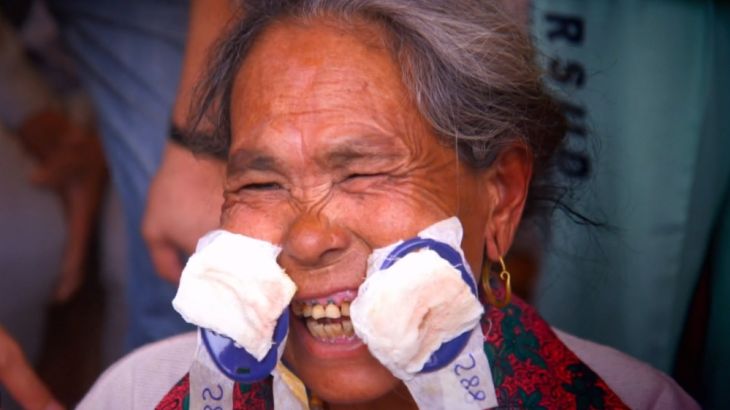
The Gift of Sight: Nepal’s Eye Care Revolution
World-recognised eye doctor pioneers technique to treat curable blindness, returning sight to country’s poor.
Millions of people around the world suffer from blindness; but in some cases, their condition could easily be cured.
Cataract blindness – a clouding of the clear lens of the eye – is a leading cause of blindness in the developing world, where most cases occur. Although it is fully curable, patients often go untreated simply because of poor access to medical facilities.
Keep reading
list of 4 itemsFirst pig kidney in a human: Is this the future of transplants?
Why are some countries decriminalising drugs?
‘No good evidence’ for gender care for youth over long-term, review finds
But in some of the most remote parts of Nepal, an eye care revolution is under way.
Ophthalmologist Sunduk Ruit has developed a simple, stitch-free surgical technique and produces lenses for cataract patients – all of which allows doctors to perform fast, low-cost surgeries.
We develop a system here keeping in mind that we face these obstacles. So such a system of eye care can very easily be replicable in other countries with very similar challenges.
Known locally as the “God of Sight”, the Nepalese doctor packs up his clinic and travels the country to service remote communities and the country’s poor, providing his services free of charge.
Ruit is so effective in his technique, that doctors from around the world come to Nepal to train with him.
Al Jazeera first met him in 2014 as he travelled among Nepal’s mountains, set up “eye camps”, and held traineeships for fellow doctors.
Five years on, Rewind returned to his centre in Kathmandu to see what has changed.
Ruit’s hospital, which also manufactures lenses, has nearly doubled its production in the past five years to about 500,000 lenses a year. His hospital has also been recognised by the World Health Organization.
Ruit also runs a community eye hospital south of Kathmandu in Makwanpur district. There, a team of doctors screens more than 300 patients a day and performs nearly 5,000 surgeries a year, most of them cataract surgeries.
Ruit says it is a model that can transfer to other developing countries.
“We develop a system here keeping in mind that we face these obstacles,” he says.
“So such a system of eye care can very easily be replicable in other countries with very similar challenges.”